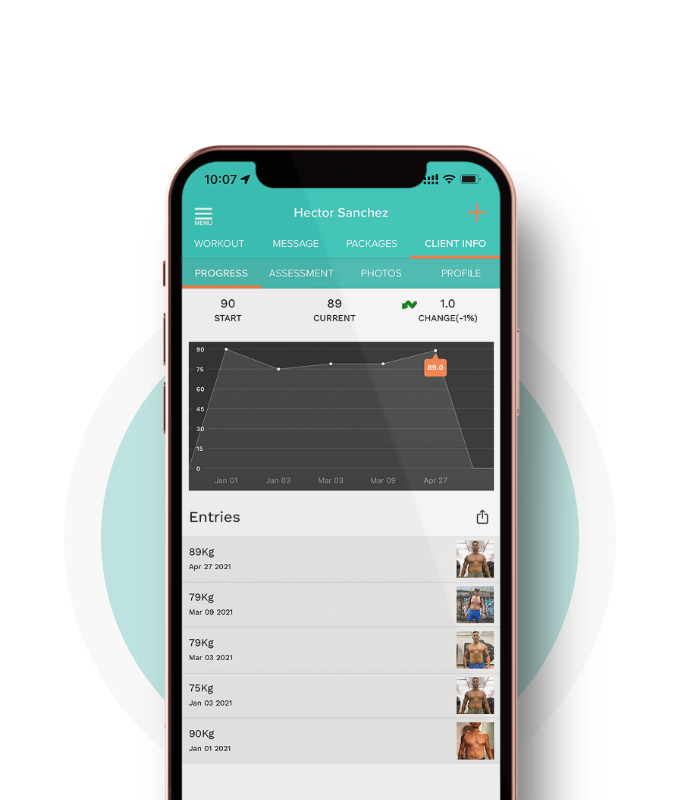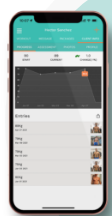10 Principles for Crushing Your Fitness Goals as a Personal Trainer
Hey there, fellow trainers! I’m a US Navy veteran from Brooklyn, and I’ve been a personal trainer for 17 years, working at top-tier gyms like NYSC, Equinox, and Structure Personal Fitness. I’m a NASM Certified Personal Trainer with multiple certifications and continuing education in strength training, corrective exercise, and functional fitness. Over the years, I’ve helped thousands of clients, including those recovering from injuries, achieve lasting results. At 48 years old, I’ve learned what makes a training program not just effective, but transformative. Here are 10 principles that will elevate your clients’ results and take your professional game to the next level..
1. Hit the Important Stuff First
When programming for clients, prioritize the most critical exercises at the
beginning of the workout. This is when energy levels are highest, ensuring
maximum effort and focus. If your client has weak glutes or a lacking core,
start with exercises targeting these areas. For glutes, this could mean
beginning with hip thrusts or heavy squats. For core strength, initiate
with planks or dead bugs. By addressing weaknesses first, you set the stage
for overall balanced development and reduced injury risk.
2. Every Move Has a Price
As trainers, we must understand that every exercise comes with a cost.
Time, energy, and the risk of injury are factors we need to consider. More
isn't always better. It’s about maximizing the return on
investment for every minute spent in the gym. For example, if your
client’s goal is hypertrophy, focus on compound movements like
squats, deadlifts, and presses that hit multiple muscle groups. This
approach saves time and delivers more significant results than isolating
each muscle group with single-joint exercises.
3. Switch It Up for Recovery
Fatigue from training is specific to the activities performed. To promote
recovery, vary your clients' workouts. For instance, if leg training is
scheduled three times a week, make each session distinct. One day could
focus on heavy squats, another on deadlifts, and the third on accessory
movements like lunges and step-ups. This variation not only aids recovery
but also keeps clients engaged and motivated, preventing monotony and
plateaus.
4. Modifiable Exercises Are Gold
Multi-joint exercises are incredibly versatile and can be modified to suit
your client’s needs and goals. Take the deadlift, for example. It can
be adjusted to sumo, conventional, deficit, or Romanian variations. This
adaptability helps prevent overuse injuries and keeps the training stimulus
fresh. Encourage clients to master these compound movements, as they offer
endless modification possibilities, making the workouts dynamic and
effective.
5. Make It Fun and Engaging
Training should be challenging but enjoyable. A motivated client is a
consistent client. Incorporate elements that make sessions fun. Use
gamification, set up friendly competitions, or integrate exercises your
clients enjoy. Create an environment that’s motivating and
supportive. This approach not only improves adherence but also fosters a
positive trainer-client relationship. Remember, a client who enjoys their
workouts is more likely to stick with the program and achieve their
goals.
6. Stick to Fundamental Patterns
Ensure that your client’s program includes all fundamental movement
patterns: squats, lunges, hip hinges, presses, and pulls. These movements
are the building blocks of a balanced, functional physique. Depending on
your client's goals and needs, you might emphasize certain patterns
over others. For example, an athlete might need more hip hinge and pulling
movements, while a general fitness client might benefit from a balanced
approach. Regularly reassess and adjust the focus to ensure all patterns
are adequately addressed.
7. Ditch the Good vs. Bad Mentality
Avoid labeling exercises as “good” or “bad.” Every
tool has its place. Machines, free weights, bodyweight exercises –
they all offer value depending on the context. For example, machines can be
beneficial for clients with injuries or those who are new to strength
training. They provide stability and allow for safe progression. Embrace a
variety of tools and methods to keep training interesting and effective.
Tailor your approach to each client’s unique situation and
goals.
8. Focus on Goals, Not Tools
Your client’s goals are what matter most. Whether it’s gaining
muscle, losing fat, or improving performance, the tools you use should
align with those goals. Don’t get hung up on using barbells,
kettlebells, or any specific equipment. Recently, I incorporated leg
extensions for a client struggling with squat depth, despite my bias
towards free weights. The result was improved quad strength and better
squat form. Always prioritize the outcome over the method.
9. Leverage the 80/20 Rule
Identify the 20% of exercises that deliver 80% of the results. Focus on
these key movements and reduce unnecessary volume. For example, compound
lifts like squats, deadlifts, and bench presses should be the foundation of
your program. They provide the most significant returns in terms of
strength and muscle growth. By streamlining the workout, you save time and
energy, making the sessions more efficient and impactful.
10. Consistency Over Intensity
Consistency is the cornerstone of progress. It’s not about going
all-out in every session; it’s about showing up and putting in the
work regularly. Encourage your clients to view training as a long-term
commitment rather than a short-term challenge. Not every session will be a
personal best, and that’s okay. Regular, sustained effort will yield
results over time. Track their progress, celebrate the small victories, and
keep them motivated for the journey ahead.
Bonus Tip - Track Your Progress Like a Boss
Tracking progress is essential for both trainers and clients. It helps you
see what’s working, make necessary adjustments, and stay motivated.
Use The Training Notebook app to log workouts, track assessments, and stay
organized. This app cuts down on paperwork, allowing you to focus on what
matters most: getting your clients and yourself to hit those fitness goals.
It’s a game-changer for personal trainers, streamlining your workflow
and enhancing client results.
Apply these principles and track your clients’ progress like a
pro. When you’re ready to streamline your workflow, use The Training
Notebook to schedule workouts, log progress, and make training
easier. Got more tips or principles? Drop them in the comments below
– let’s get after it!
Hector Sanchez
CEO, The Training
Notebook




